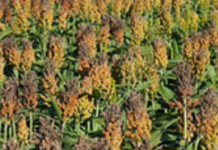If you have had trouble finding a listing of plants recommended for Kansas, visit our web page devoted to this topic. We have links to a wide variety of plants including iris, daylilies), fruit, vegetables, turfgrass, low-maintenance roses and tree recommendations. The tree recommendations are broken out by areas of the state. We also list recommended low water use plants. You can find this page at http://hnr.k-state.edu/extension/info-center/recommended-plants/
We also have images of hundreds of the following:
– Varieties of iris, daylilies, roses and peonies found in the University Gardens Collection Gardens at http://www.k-state.edu/gardens/gardens/collections/ (Ward Upham)
Poisonous Plants
Some of the plants we commonly use in our homes, gardens and landscapes are poisonous. We often have requests from parents who want to make sure their plants are safe for young children.
The following poisonous plant list came from various University websites.
Flowers:
caladium (all parts)
cardinal flower (all parts)
castor bean (seeds and leaves)
daffodil (all parts)
flowering tobacco {Nicotiana} (leaves and flowers)
four-o-clock (roots and seeds)
foxglove (all parts)
hellebore (all parts)
iris (all parts)
lantana (unripe fruits and leaves)
larkspur {Delpinium} (all parts)
lily of the valley (all parts)
lupine (all parts)
monkshood(all parts)
poppy (all parts except ripe seeds)
snowdrop (bulb)
spurge (milky sap)
star-of-Bethlehem (all parts)
sweet pea (seeds, seedlings, and pods)
tulip (bulbs)
Houseplants:
Chinese Evergreen
anthurium (all parts)
aloe (sap if ingested)
calla lily (all parts)
croton (seeds, leaves, and stems)
crown-of-thorns (milky sap)
dieffenbachia (all parts)
elephant ear (all fig (leaves, fruits, and sap)
Jerusalem Cherry (all parts)
mistletoe (all parts)
Philodendron (all parts)
Fruits:
apple (bark, leaves, seeds)
pear (bark, leaves, seeds)
apricot (bark, leaves, seeds, pits)
peach (bark, leaves, seeds, pits)
nectarine (bark, leaves, seeds, pits)
plum (bark, leaves, seeds, pits)
cherry (bark, leaves, seeds, pits)
avocado (leaves, unripe fruit, bark, and seeds)
Landscape plants
azalea (leaves and flowers)
black locust (all parts)
Boston ivy (berries)
boxwood (leaves and twigs)
buckeye (leaves, shoots, bark, flowers, and seeds)
burning bush (all parts)
cherry (leaves, twigs, bark, and seeds)
clematis (leaves)
elderberry (roots, stems, bark, leaves, and unripe fruits)
English ivy (all parts)
golden chaintree {Laburnum} (all parts)
holly (berries and leaves)
horsechestnut (all parts)
hydrangea (leaves and buds of some species)
Kentucky coffee tree (seeds, fruit pulp, leaves, twigs)
oak (acorns, leaves, and young shoots of some species)
poison sumac (all parts)
privet (all parts)
rhododendron (leaves and flowers)
Virginia creeper or woodbine (berries)
yew {Taxus} (all parts except the fleshy red cover on the seed)
wisteria (all parts)
Vegetables:
potato (green skin, buds, and sprouts on tubers, also fruits and foliage)
rhubarb (leafy blade, not the leaf stalk)
For more information, consult the following references.
Common Poisonous Plants and Mushrooms of North America, Turner and Szcawinski, Timber Press, Inc. ISBN 0-88192-179-3
Potentially Poisonous Plants in the House and Garden, http://www.northcarolinahealth.com/poisonous-house-plants-and-vegetables.php
Ward Upham, Extension Agent




